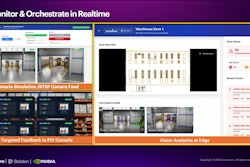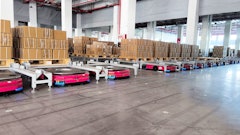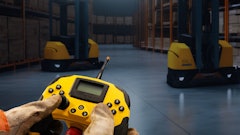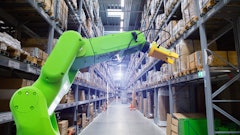
Warehousing hazardous materials extends far beyond a simple storage problem. It is fundamentally a comprehensive exercise in risk management. The complexities involved necessitate a proactive and multi-faceted approach to mitigate potential dangers to personnel, the environment, and surrounding communities.
Every aspect, from facility design and operational protocols to staff training and emergency response, must be meticulously engineered to identify, assess, and control risks associated with the storage and handling of dangerous goods. This paradigm shift from mere containment to active risk control is paramount for ensuring safety, regulatory compliance, and operational integrity.
Industries handling dangerous goods, from chemicals and pharmaceuticals to fast moving consumer goods (FMCG), are operating under sharper regulatory scrutiny than ever before. OSHA and DOT regulators examine everything from safety data sheet (SDS) accuracy to segregation protocols.
A mislabeled drum. An outdated SDS. A compatibility lapse that goes unnoticed. Each can trigger a chain reaction of incident reports, fines, or even shutdowns. What separates compliant facilities from those facing enforcement isn’t intent; its infrastructure, process discipline, and the ability to prove both under audit.
The compliance maze: Why traditional methods fall short
The regulatory web for hazardous materials has grown dense. In the United States, OSHA's Hazard Communication Standard mandates SDS availability and worker training, DOT's Hazardous Materials Regulations govern packaging and transport documentation, and NFPA 400 dictates storage configurations by hazard class.
Cross-border operations add layers: ADR for European road transport, the IMDG Code for maritime shipping, and REACH for chemical registration in the EU. Each framework carries its own classification schemes and documentation mandates. Jurisdictions fragment further at the state level. Australia's Victoria, Western Australia, New South Wales, and South Australia each impose distinct licensing requirements and storage quantity thresholds.
Traditional methods can't keep pace. Excel trackers lose version control when SDS updates don't propagate across shifts. Paper logs depend on individual memory. Email chains create gaps between what's stored and what's recorded.
Real-time traceability becomes impossible when lot numbers live in one system, expiry dates in another, and storage locations in a third. The latency between physical reality and the recorded state creates compliance gaps. The question isn't whether manual methods fail, but when.
Smart infrastructure: Sensing risk before it escalates
Modern hazmat storage runs on continuous monitoring, not periodic checks. IoT sensors track temperature, humidity, pressure, and gas concentrations in real time. The data feeds into centralized systems that flag deviations before they become incidents.
Fixed gas detection arrays watch for flammable vapors, toxic releases, and oxygen depletion. Environmental telemetry catches thermal drift in temperature-sensitive compounds, peroxides, certain pharmaceuticals, and reactive chemicals that destabilize outside narrow ranges.
Here's how it works in practice. Sensors detect rising flammable vapor concentration near Class 3 liquid storage. The system logs the breach, triggers alarms, and activates exhaust ventilation automatically. Personnel get alerts with specific locations, not building-wide notifications that waste response time.
Temperature excursions in refrigerated hazmat zones work the same way. In food logistics operations storing ammonia or dry ice, immediate escalations prevent phase changes or pressure failures. The shift is from reactive discovery during rounds to engineered detection with sub-minute response windows. When a single parameter breach can ignite consequences, passive infrastructure won't hold up under scrutiny.
Integrated WMS and compliance automation
Warehouse management systems have moved beyond inventory optimization. Modern platforms embed hazmat-specific compliance logic directly into workflows. Australian dangerous goods operations illustrate how these capabilities work in practice.
Segregation enforcement extends through the entire workflow. At putaway, the system maintains minimum distance separation between incompatible classes, enforces vertical stacking restrictions that prevent oxidizers above flammables, and applies structural load limits across the stack. During picking, it prevents incompatible classes from being staged together. Staging areas are dynamically assigned to maintain required separation during handling transitions. Compatibility matrices replace operator memory and posted charts.
Packaging and labeling validation happens at receiving and shipping. The system verifies UN numbers against hazard class declarations, validates shipping names on outbound documentation, and runs automated compatibility checks during packing operations to prevent mixing of incompatible substances.
Expiry tracking becomes automatic. The system flags chemicals approaching shelf-life limits, quarantines time-sensitive materials like peroxide formers, and blocks expired stock from outbound picking. SDS management shifts from binder maintenance to digital repositories with version control and audit trails. The system maintains a comprehensive transaction log, every receipt, putaway, pick, and shipment, creating movement history for regulatory audits and incident investigation.
Integration with ERP and transportation management systems closes the traceability loop. Inbound receipts capture lot numbers, hazard classifications, and SDS identifiers. That data follows material through storage, picking, and staging.
At the transport layer, these Australian implementations demonstrate sophisticated enforcement. The system enforces DG license capacity restrictions tied to driver certifications, validates vehicle-type requirements for specific hazard classes, enforces load plans that separate incompatible materials, and applies state-specific route restrictions. The system generates manifests that include SDS references and tracks cumulative quantities against state licensing thresholds. Alerts trigger as inventory approaches these limits, preventing license violations before they occur.
When the product ships, the TMS inherits classification codes, packaging instructions, and emergency response information required under DOT HMR. Chain-of-custody documentation generates automatically. Some operations add AI-driven document validation, scanning labels, cross-referencing GHS pictograms, and verifying UN numbers. The goal isn't efficiency. It's creating an auditable system where compliance is structural, not procedural.
Automation and robotics: Reducing human risk exposure
Reducing human contact with hazardous materials isn't just safer; It's risk elimination. Autonomous guided vehicles handle drum transport in chemical warehouses, navigating routes without operator exposure to corrosive or toxic substances. Robotic picking systems retrieve small-quantity hazmat from high-density storage, keeping personnel out of restricted zones during routine operations.
Automated storage and retrieval systems purpose-built for flammable goods manage Class 3 liquids in temperature-controlled cells. Segregation protocols stay intact. Ignition sources stay minimal. Robotic forklifts with specialized attachments move chemical drums and IBCs, reducing repetitive exposure. Drones equipped with sensors and cameras conduct inspections in high-risk zones, detecting leaks, corrosion, structural damage, or thermal anomalies, without requiring personnel to enter confined spaces or elevated storage areas. Autonomous robots conduct cycle counts of hazardous inventory, performing frequent, accurate stock verification without exposing personnel to storage zones.
These systems don't replace human judgment. Lockout/tagout procedures, exception handling, and emergency response all still require trained personnel. But they shift routine exposure from continuous to occasional. Workers move from the hazard zone to the control room. In operations where a spill, leak, or vapor release can injure within seconds, distance is the primary control.
From risk to resilience
Hazmat warehousing has crossed a threshold. It is no longer about reacting to incidents but about building systems that predict and prevent them. Sensors detect early warnings. WMS platforms enforce compliance at every transaction. Robotics shifts workers from exposure to oversight.
This convergence of technology, data, and discipline is creating a new class of facility: the resilient warehouse, one where compliance is a built-in property of the operation itself.
Because in an industry where a single overlooked expiry date or misclassified drum can escalate into disaster, digital intelligence has become the most defensible safeguard. The real challenge for leaders now is not deciding whether to modernize but determining how fast they can close the gap between today’s processes and tomorrow’s expectations.













![Pros To Know 2026 [color]](https://img.sdcexec.com/mindful/acbm/workspaces/default/uploads/2025/08/prostoknow-2026-color.mduFvhpgMk.png?ar=16%3A9&auto=format%2Ccompress&bg=fff&fill-color=fff&fit=fill&h=135&q=70&w=240)





